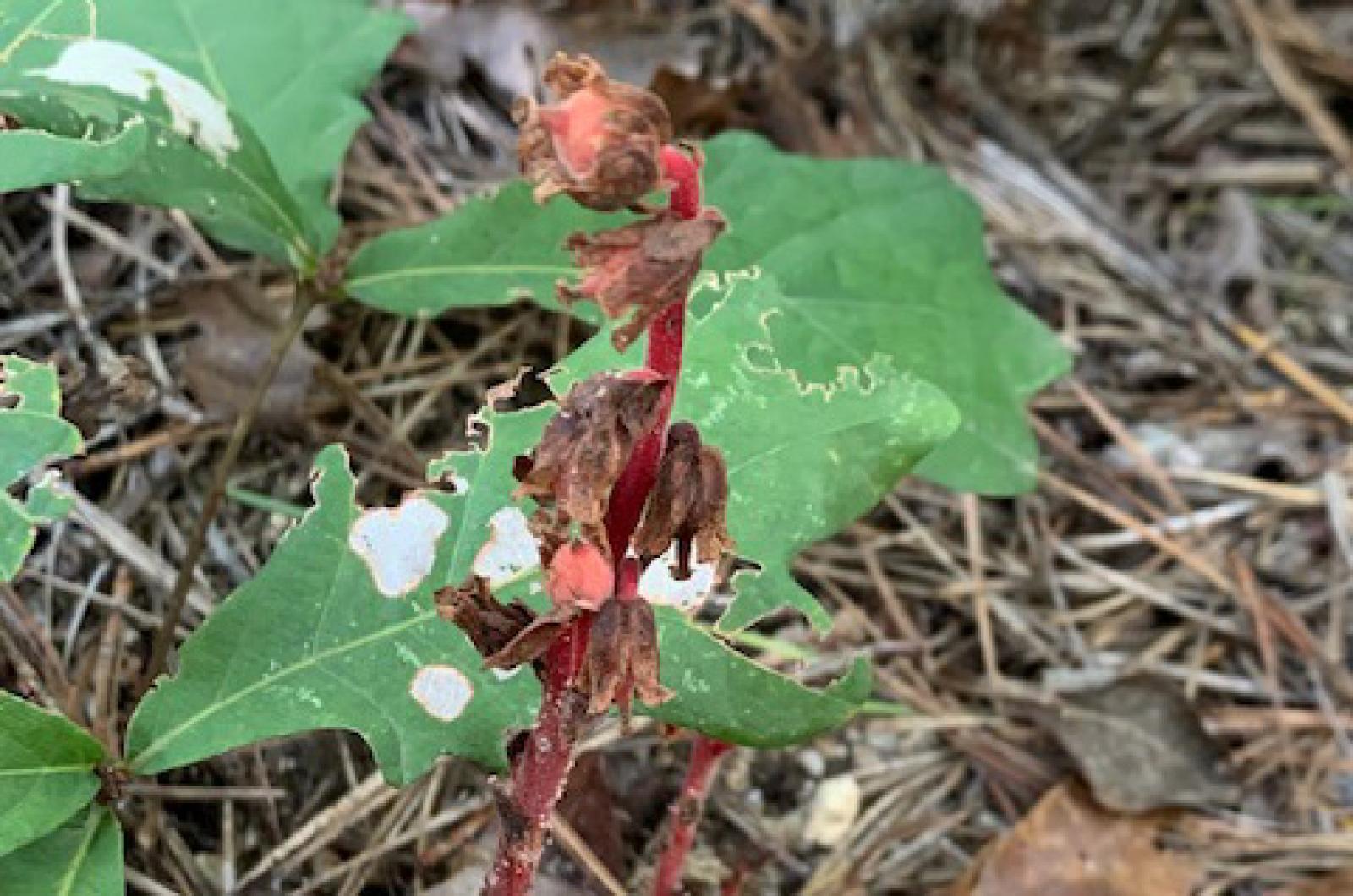No matter how bright the future, this plant never needs to wear shades.
Pinesap is getting its day in the sun, though that great orb in the sky won’t provide it with food and energy. Most plants employ photosynthesis to produce food; however, pinesap is different. Lacking chlorophyll, it must obtain nourishment another way. As a mycoheterotroph, or one that gets its food from fungus, it relies on partners.
It takes two to tango, and to feed pinesap. An associated fungus is where pinesap gets its food. However, that fungus obtains its nourishment from the roots of a tree. Sustenance for pinesap is ultimately a three-way affair.
Without the need for sunlight, this plant has adapted. Its leaves are greatly reduced, manifesting as small, scale-like appendages along the plant’s stem. Also, without chlorophyll, its color is anything but green. One can find yellow (usually spring bloomers), brown, pink, and red (fall blooming plants), and even candy cane-like spirals in specimens. Multicolor plants are also possible: a cute combination might be red stem with yellow flowers.
The color that pinesap is least likely to be is white. That color is reserved for its sibling, another interesting plant called Indian pipe, corpse plant, or ghost plant. These two species share the same genus, monotropa, which means once-turned, and refers to the movement of the flower from drooping to erect.
Besides the color difference, you can detect other distinctions between the two relatives. Pinesap has hairy flowers and foliage, while Indian pipe lacks those hairs. Flowers on the stalk appear in multiples for pinesap or single flowers for Indian pipe.
While monotropa hypopitys is one of the scientific names of the species, there are many others, and a spelling conundrum to boot. Linnaeus, who named the plant, spelled the species’ name “hypopithy,” with a second “h” at the end, though that spelling seems to have fallen out of favor. Most modern sources now use the h-less version. A little switcheroo of the names has also been used: hypopitys monotropa is the same species.
No matter what you call it, deliberate your consumption of it. Though described as barely edible, there are a few records of its use as food. Merritt Fernald, an American botanist and author of Edible Wild Plants of Eastern North America, found mention of the edibility of monotropa by another botanist. He explained, “So far as we are informed, the only person who has reported upon it is Prest, who states the fresh plant is almost tasteless but that when parboiled and then boiled or roasted it is ‘comparable to asparagus.’ Our own single experiment was not gratifying in its result.”
Though it is somewhat appealing to consider, please don’t collect and consume this plant. It does have some toxic components, and also isn’t plentiful enough to be harvested for breakfast, lunch, or dinner. Deer will make a meal of it, eating the flower heads. Bumblebees will also forage among its flowers.
You might have already missed your chance to see this species, which blooms only through October. Along with the daylight, pinesap will soon be diminished, as the sun is setting for the season of this peculiar plant.
Suzan Bellincampi is islands director for Felix Neck Wildlife Sanctuary in Edgartown and the Nantucket Wildlife Sanctuaries. She is also the author of Martha’s Vineyard: A Field Guide to Island Nature and The Nature of Martha’s Vineyard.




Comments
Comment policy »